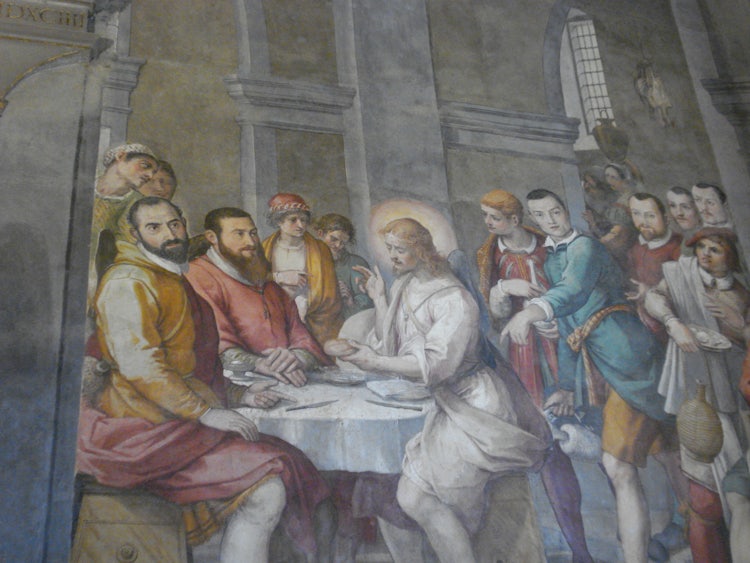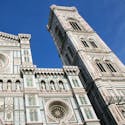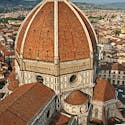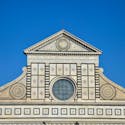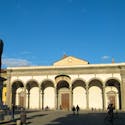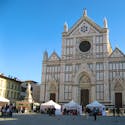An Augustinian Convent which grew into an important Basilica
This church is nestled in a quiet little corner of Florence and it is very possible that you will pass in front of it several times before even really noticing its perfectly proportioned structure.
Not many tourists cross the river to explore the streets, alleys & city squares in the Oltrarno, but if you were to find some extra time then this is the perfect area to breath some authentic Florentine ambiance into your holiday.
The first religious structure, which has long been replaced, dates back before 1252. Located outside the original city walls, it was surrounded by the Tuscan countryside dotted with a few country-styled homes and was adorned with paintings by Cimabue, Simone Memmi, and Giottino. The Augustinian monks came onto the scene around this time, which would make this among the earliest Augustinian foundations still occupied by the monks.
Not long after the mid 1200's Florence, both inside and outside of the city walls, began to attract an influx of migrants. This steady flow of people, plus the construction of the Santa Trinita bridge, pushed the area to take on a decisive social, political and intellectual importance. You can still see signs of this diversity if you spend some time in the Piazza Santo Spirito located directly in front of the church.
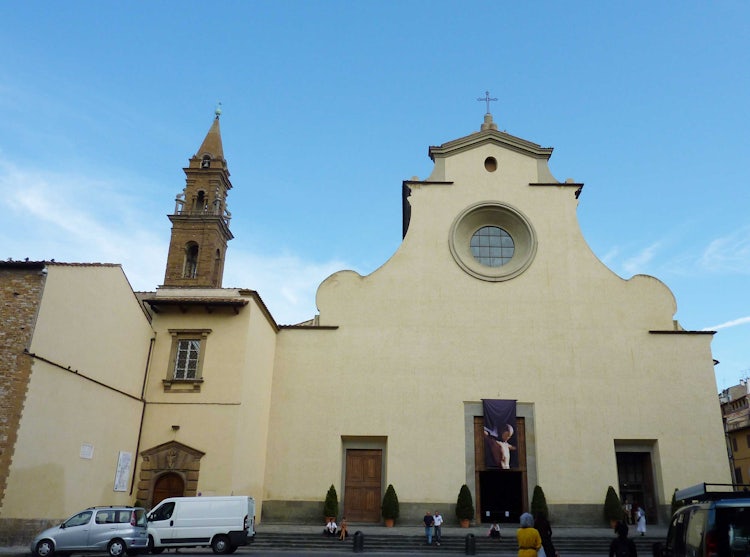
Those in the government center of Florence recognized the need for more political influence in this area, so they decided to do a bit of “inverse" bribing, (instead of the people bribing the State, it was the State trying to sway the people). They set up a fund for the reconstruction of the church assuring a certain presence through religious influence.
Avant Garde Architecture
The creation of an important church, especially like that of Santo Spirito, was not just a compilation stone and mortar built in a cross-shaped floor plan with few chapels and an altar. The architectural design was part of the artwork, it was an integral part of both telling a story and setting the mood for the worshippers. In fact, it was the first thing a visitor to the church would encounter - therefore the architect had to have not just a solid knowledge of numbers, proportions and architectural canons - but also know the Bible, so they could interpret how the Word should be preached.
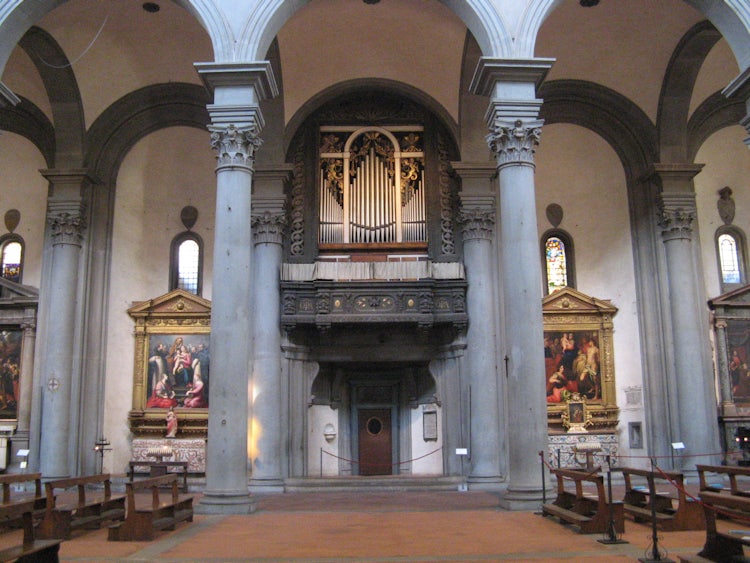
Crunching the Numbers
Length 97 meters
Aisle width 32 meters
Width at the cross 58 meters
38 Lateral Altars
Brunelleschi in his original model considered not only how the church would be seen with the naked eye, but how the church should be lived as a stage for the priest as well as how the physical building would interact with nature such as light, shadows and space. Perhaps it is for this reason that many consider the original plan to be one of his best creations.
However, he only lived to see the first two years of construction before passing away leaving the completion of the work in the hands of others. Since he was notorious for not sharing his plans with anyone, many of the details had to be interpreted and were most probably lost over time.
Brunelleschi worked to bring classical order, which is central to Renaissance architecture (for example Greek columns), into his projects.
Those who had the formidable job of interpreting his scarce instructions were his followers Antonio Manetti, Giovanni da Gaiole, and Salvi d'Andrea. The general consensus was that Brunelleschi had been too radical in his vision and they proceeded to softened the edges with several changes to the plans.
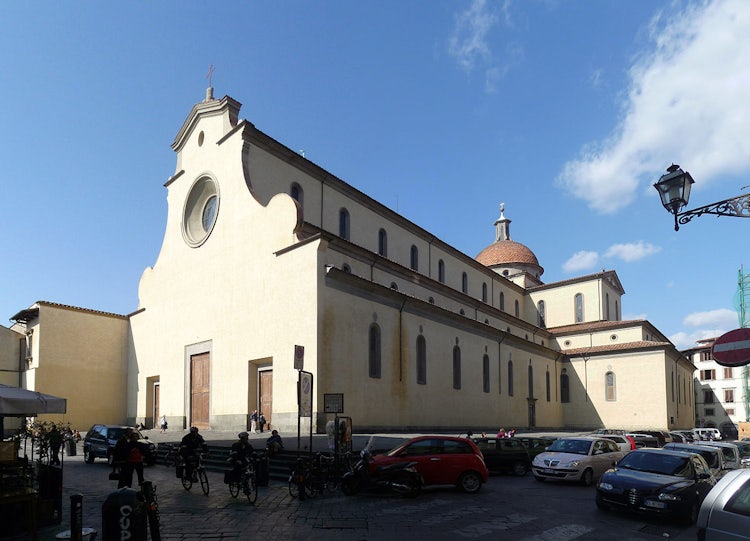
The Exterior
As you walk around the outside of the church, you will be struck by it's rather stark appearance - no marble decorations like that of Santa Croce or San Miniato or pillars and ornamentation like that of Santa Trinita, but neither was it left in an "unfinished state" like that of San Lorenzo.
The actual façade is from 1792 and was decorated with "painted architectural detailing" later removed during restoration work in the 1960’s. As you walk along side the exterior walls, you will note the coats of arms over the windows, these belonged to the families whose chapels are on the other side of the windows.
Two notes of interest:
1) Brunelleschi originally wanted the church facade and piazza to overlook the river Arno - however, it wasn’t possible to buy all the property on the other side of the church because not everyone wanted to sell (even if it was for a church...)
2) Brunelleschi envisioned that all sides of the church would be flanked with a loggia, much like that at Innocenti Museum in Piazza Santissima but it didn't come about because this would have required changing the façade
The Interiors
The church is characterized by columns that divide the church into three aisles and surround the high altar, much like Basilica San Lorenzo Church. There are pilasters on the side walls and a coffered ceiling, which was not part of the original design. Brunelleschi had intended to leave the ceiling open for an image of the walls reaching up to the heavens.

All in all, this was, and still is, a classic Brunelleschi design: “a cavernous but harmonious space". As he did in San Lorenzo, the mathematically symmetric architecture was emphasized by creamy white walls and dark gray pietra serena stonework - in fact, even more emphasis was added with the color contrast and you will see how the stone gracefully stretches in arches from one column to the next.
Notably out of place is the fanciful carved, inlaid, and statue-studded high altar baldacchino, a baroque work which dates from the early 17th century. An interesting historical note: A “battle of the pulpits" between in the mid-to-late 1400’s took place here between Savonarola, a Dominican friar, who for a short period of time was a great influence on the religious and civic affairs of Florence and Mariano da Genazzano, a very public opponent of Girolamo Savonarola taught who spent his studying the Augustine teachings.
The Artwork Within
The simplicity of the interior hosts a wealth of intriguing pieces of artwork, a leisurely stroll through the church and the abundant natural light, make it easy to appreciate the beauty within. Though there are many pieces by lesser known artists, there are still a few names that you will surely recognize.
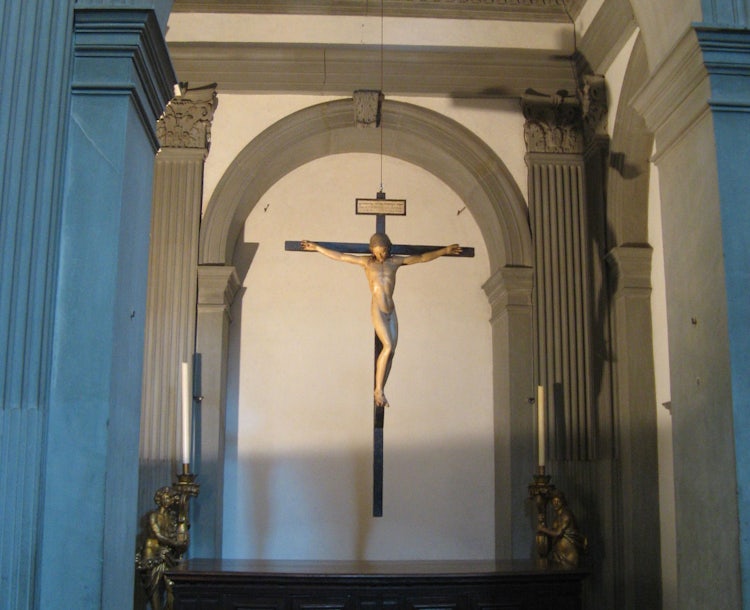
Michelangelo
Michelangelo found refuge in the convent of Santo Spirito in 1492, at the age of seventeen, after the death of his patron Lorenzo il Magnifico. It was within the walls of Santo Spirito that the curious artists had the opportunity to analyze corpses from the convent's hospital to study the anatomy of the human body.
As a form of thank-you, Michelangelo carved a highly realistic wooden sculpture which hung over the main alter until the French occupation of the late 18thcentury and the suppression of the convent. At this point the cross was recorded as lost.
But actually it was hidden in plain sight!
It had been moved to another chapel and painted to disguise its true origins! Upon the restoration to its original elegance, it went to the museum of Casa Buonarroti, where it remained until 2000 and then re-establish in the sacristy of Santo Spirito.
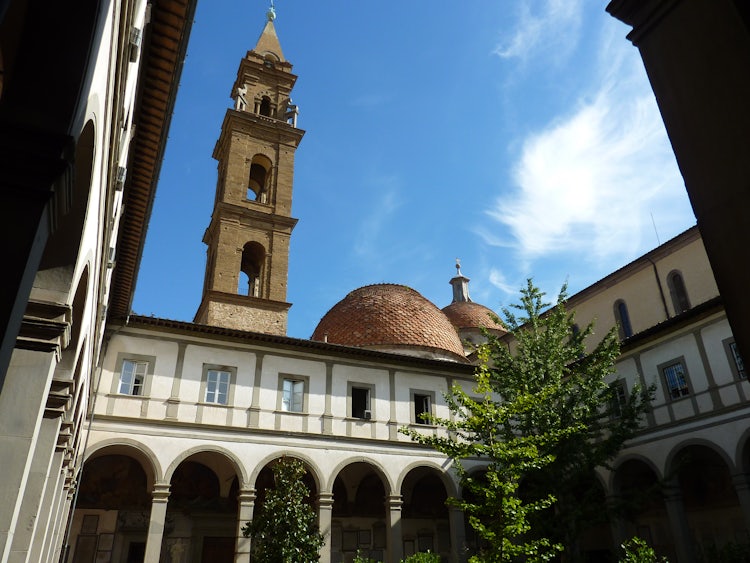
Perugino
This artist, an Italian Renaissance painter of the Umbrian school, is said to have apprenticed in the workshop of Andrea del Verrocchio alongside Leonardo da Vinci, Domenico Ghirlandaio and others. Though much of his work in Florence was lost, some pieces were actually turned into stained glass. The inner facade of the church features a stained glass window by Perugino.
Andrea Orcagna
The refectory is practically all that survives of the Santo Spirito complex before the restructuring of the church. Hidden and disregarded for hundred’s of years, there is a dramatic, but unfortunately a very ruined fresco, Crucifixion and Cenacolo by Andrea Orcagna.
